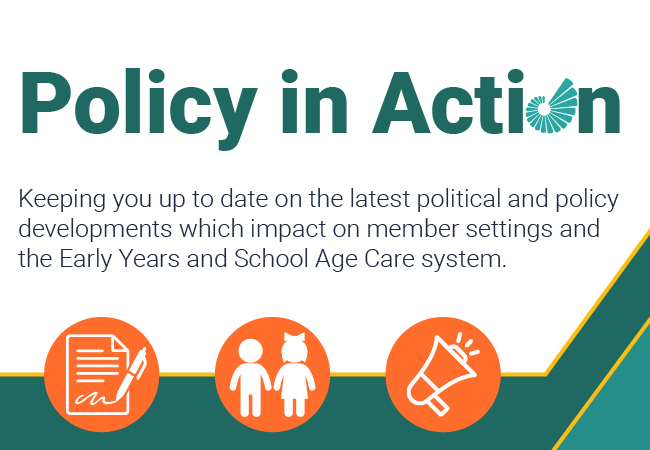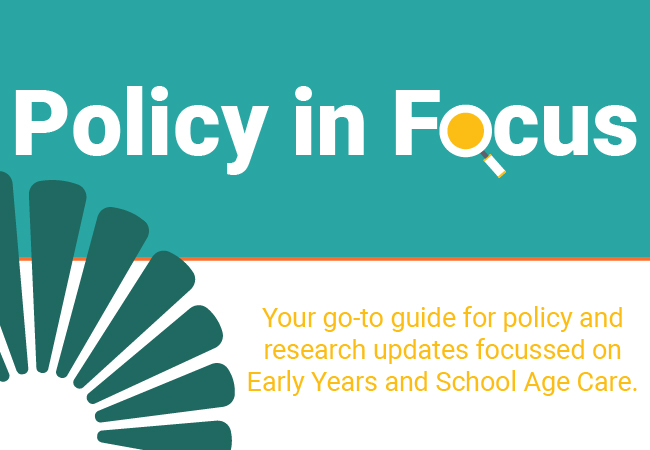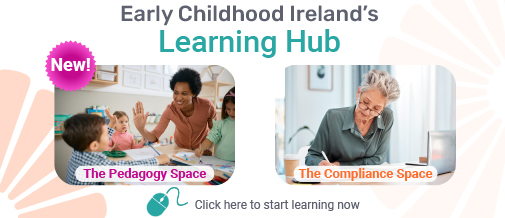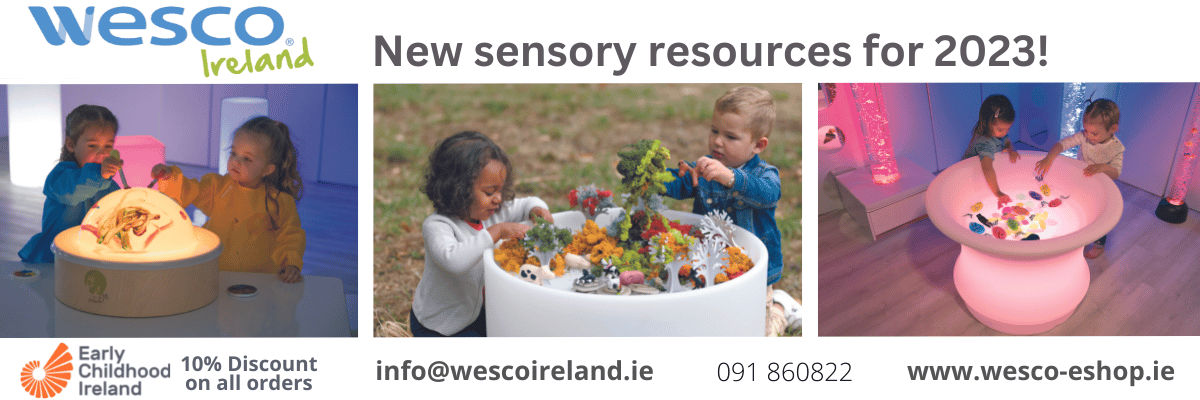Getting to know you
Now that the initial new year busyness is easing, the ‘new’ children are settling in and parents are a bit less anxious about letting their little ones off to embark on a new journey. We think about building a community in the preschool and we know that it takes more than a few weeks of settling in. Getting to know the children, what their interests are, what their temperaments are, what their dispositions are, takes longer. Of course, a good settling in policy helps, taking the time to get to know parents and to ensure that parents know that you want, indeed need, to find out as much as you can about their child, so you can provide the best possible experience for all the children. In this blog, we will look at ways to develop this further, so we can enrich these experiences even more.
Many settings use ‘getting to know you’ or ‘Eolas faoi do paiste’ forms to find out more about children. These can be a great way to find out about a child’s interests and dispositions. It is important however, to ask relevant questions and to explain to parents the purpose of the form. Keep it simple and short and positive. You may need to translate the form for parents who do not read the language of your setting.
Learning journals/ individual portfolios are a key way of showing how we know children, how tuned in we are to them. Wendy Lee speaks about educators collecting information on what interests children have before joining the setting. For example, a parent identified their child’s interest in tractors. Wendy sees this on the form and says to the educator, “So, when I open this child’s journal, I will see something about tractors”. If the child’s interests are not featured, then we are not using information fully to meet children’s needs.
Using this information means we are really getting to know children and will prevent us making assumptions about children. I was recently talking to a little boy aged 5, both his parents are Lithuanian, but he was born in Ireland. I made a comment about Cork hurling and he didn’t know what I meant, from his response it was clear he identified more as Lithuanian, rather than Irish. I recently read about a child who spoke Spanish as his first language and the staff in his setting assumed he was from Spain…he was in fact from Argentina! If we do not ask questions we can make assumptions like this that can hamper the way we work with children and families.
A family wall is a great way of helping children bridge the transition between home and preschool. A family wall is created by displaying photos of children and their families. Laminating the photos before putting them on the wall makes them more durable. Use velcro tape so children can take photos down. It is important that the photos are displayed at the child’s level. The Equality and Diversity Guidelines (DCYA 2016) says “The family wall is an active tool as well as a form of identity support and comfort. It should be an ongoing feature of the curriculum and not just part of a theme. Children and parents should be able to add to it according as events unfold during the year.” If wall space is limited the same benefits can be achieved by sticking photos of parents, siblings, pets and other significant people on small cube shaped boxes and covering with clear ‘contact’. Alternatively, photo albums with these precious photos can be created. Explain the purpose of the family wall when parents are registering their child and encourage them to provide a selection of photos. It may be more convenient for parents to email them.
In some settings, educators ask children to draw their family early in the year and the educator writes the names of family members over each figure. This is a good way of knowing the family structure and any pets that are in the family (apart from the information on the registration forms). They ask the children to repeat this exercise at the end of the year and the progression in their ability to represent or draw is obvious.
The activities done in the early days in the setting can link to the end of year activities also. For example, using children’s handprints in their personal portfolio or learning journal. With activities like this it is, of course, important that children are active participants and that the children who don’t like messy activities are not forced to take part. Repeating the activity at the end of the year gives children a sense of how much they have grown.
In September one setting asked children to draw a picture of what they want to be when they grow up -they draw and the educators write a description of what they drew. Typically, they want to be princesses and superheroes. As the year goes on there is lots of discussion about jobs and careers, and visits from parents and other people in the community. At the end of the year the children are again asked to draw what they would like to be when they grow up. Children now have a much broader concept of the different jobs and careers they can aspire to – doctors, scientists, architects, engineers etc.
These kinds of documentation can be added at the beginning and end of the children’s individual journals, and are a nice way of linking the beginning of the year to the ending. They are also a great way to get children to reflect on their own learning.
Slowing down in our interactions with children really helps us tune in to hear and see what makes them tick. When we become caught up in the routine and our adult-led plans we can miss what children know, what engages them, and what they would like us to know.
If you have examples of how you tune in to children please contact us – we can share them on Facebook and on our website!
Bio:
Máire Corbett is an Early Childhood Specialist at Early Childhood Ireland. She trained in Montessori teaching and has completed an MA in Integrated Provision for Children and Families with the University of Leicester, at Pen Green.
Visiting member settings inspires me as I see the passion and energy educators put into providing great experiences for the children in their settings. I love seeing competent children at play!









